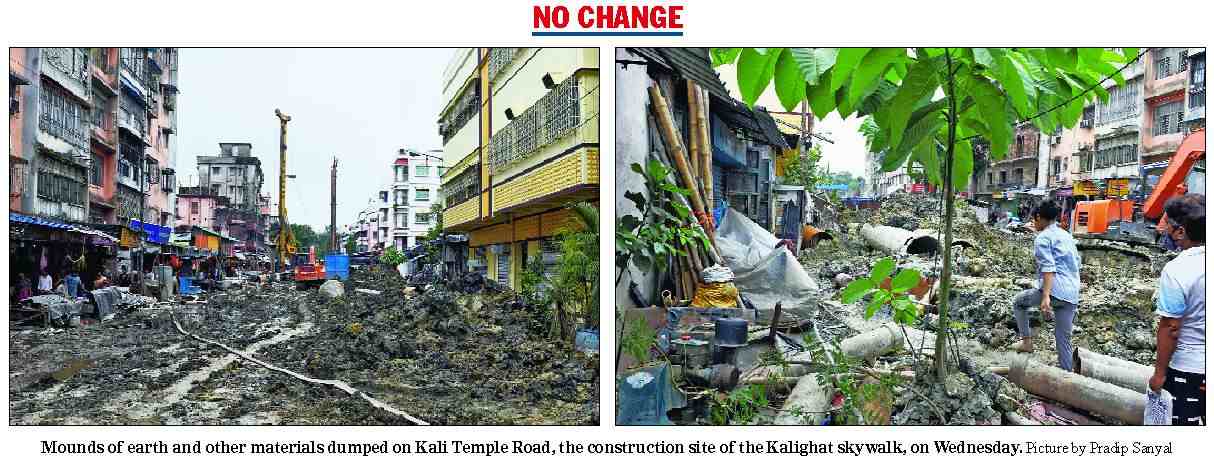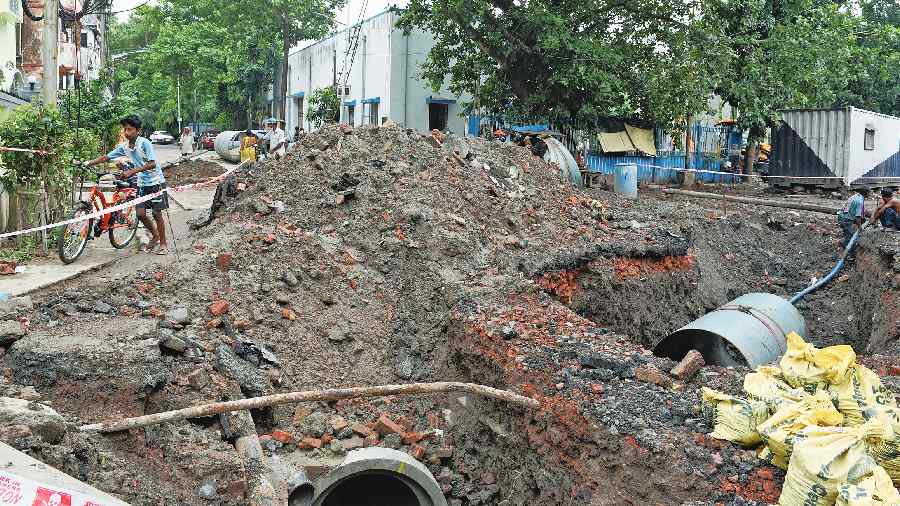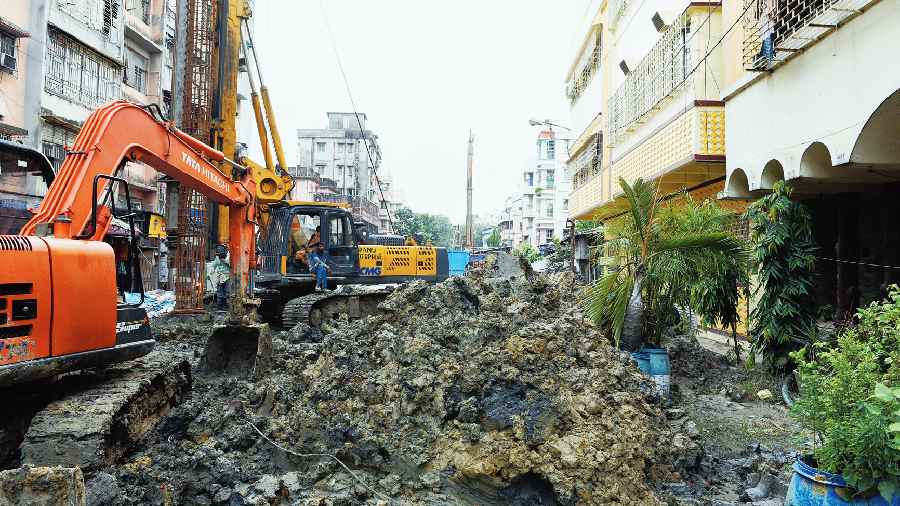Two public utility projects in the city have turned into a headache for residents living close to them. In one, there has been some change for the better, in the other, the situation remains the same.
A road in Tollygunge that was blocked in a way that even ambulances and fire tenders could not have gone beyond a point has started to open up.
Portions of Radhagobinda Nath Sarani that no vehicle could ply through because of the poor condition have got a layer of bitumen. The road was dug up to lay underground pipes.
The Telegraph had reported on June 16 how residents living along Radhagobinda Nath Sarani and other roads running parallel to it were suffering because of the thoroughfare remaining blocked for over six months, in phases.
Things that could have been done weeks ago are being done now.
But in Kalighat, there was still no change in the sufferings of the residents living along the skywalk construction site. This newspaper reported on Wednesday that residents had to walk through heaps of soil, broken pipes and slushy surfaces to reach their homes.
Mayor Firhad Hakim said on Wednesday the Kolkata Municipal Corporation would “create some space for residents” to leave and enter their homes.
Tollygunge
The biggest fear of residents living towards the western end of Radhagobinda Nath Sarani is how an ambulance or fire engines would reach them during an emergency. A week ago, the entire width of the road was blocked where it intersects with Kalabagan Lane.
Now, there is space for a vehicle to pass, though the surface is still slushy and cars are often getting stuck in the mud. “I am now able to take out my car through that intersection. Hopefully, ambulances will be able to come,” said a man who was worried about how to take his 94-year-old mother to hospital if he had to.
A long stretch of Radhagobinda Nath Sarani, which starts from near MR Bangur Hospital on Deshapran Sashmal Road and goes westward, has got a layer of bitumen.
The Telegraph had reported on June 16 that the first 100 metres of the road had only a single lane usable for vehicles. The rest of the road width was slushy. A little ahead, crushed bricks had been laid along a stretch that had been dug up. This stretch has now been paved with a layer of bitumen.

There has also been some improvement at the intersection of Kalabagan Lane and Radhagobinda Nath Sarani, which was completely blocked on June 16 with trenches dug into the road. The trenches have been covered, barring one where a gully pit is under construction.
“The work to lay underground pipelines is nearing completion. We have created space for vehicles to pass,” said local councillor Sandip Nandi Majumdar.
“The stretch where work is in its last phase will soon be over. We will not be able to lay bitumen there immediately. We will lay bricks across the surface so that people and cars can move without difficulty,” he said.
Kalighat
Residents living along the construction site of the Kalighat skywalk have been walking over heaps of soil, broken pipes, stacked construction materials and slippery surfaces after stepping out of or on their way home.
The situation has been like this for the past month. Debashis Kumar, MLA from Rashbehari, had promised to look into the matter when this newspaper spoke with him on Monday.
On Wednesday, Kumar said: “I have spoken with engineers. The problem is that there is very little working space. I will visit the spot on Saturday and try to find a solution.”

The skywalk will stretch between the intersection of Kali Temple Road and Deshapran Sashmal Road and the Kali temple. An arm will take off from the Kalighat fire station.
The KMC did not put up any barricades along the side facing the houses. As a result, the soil that is being dug up lies strewn near the doors.
“We do not in any way want to be a hindrance to the project. All we are asking for is a passage for us that is not slippery. We have to do our work and the authorities should look into our sufferings, too,” said a 78-year-old man.
The KMC should have placed barricades facing the homes to ensure that the soil does not lie strewn in front the gates of the buildings, said an engineer with a private construction company.


